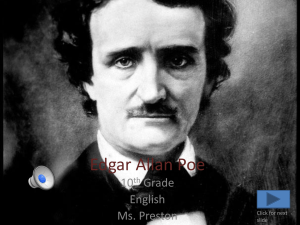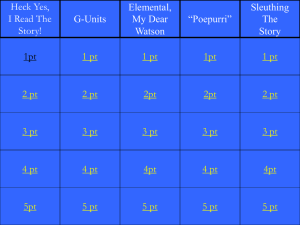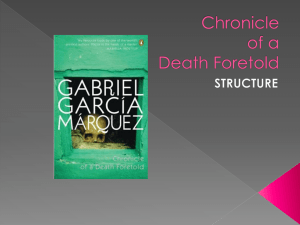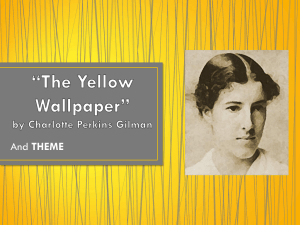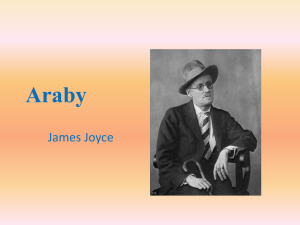“The Black Cat”
advertisement
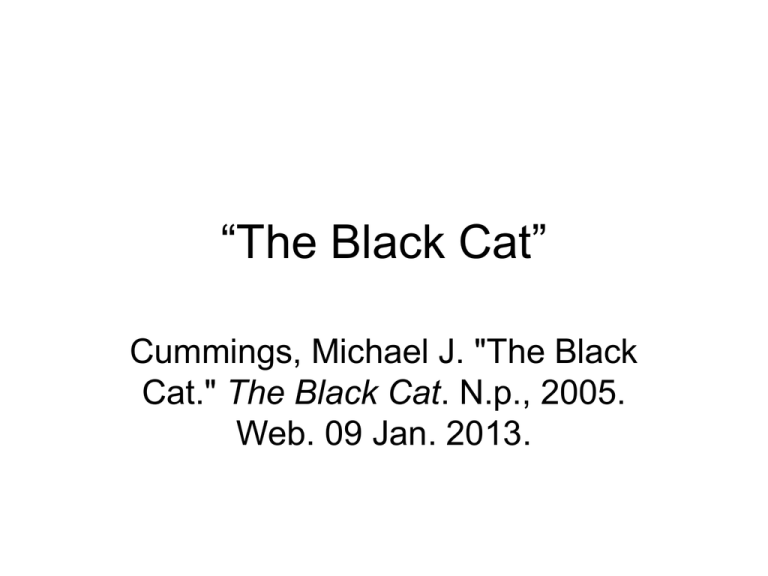
“The Black Cat” Cummings, Michael J. "The Black Cat." The Black Cat. N.p., 2005. Web. 09 Jan. 2013. Setting • The story opens in the cell of a prisoner the day before he is to be executed by hanging. After introducing himself to readers as a man who underwent a horrifying experience, the prisoner writes down the details of this experience, which led to his imprisonment and scheduled execution. – The events in his tale are set at his home and in a tavern. – Although these events take place over several years, the recounting of these events in writing takes place on a single day in the narrator's prison cell. Characters • The Narrator, a prisoner scheduled for execution. His loathing of a cat he once loved leads to his commission of a capital crime. • The Narrator's Wife, a woman of agreeable disposition who likes animals and obtains many pets for her husband. • First Black Cat, a cat named Pluto that loves the narrator but irritates him when it follows him everywhere. • Second Black Cat, a cat that resembles the first black cat and may be a reincarnation of the latter–or so the narrator may think. • Policemen, officers who investigate the happenings at the home of the narrator. • Servant, Person working in the narrator's household. Type of Work: Short Story • Short story in the horror genre that focuses on the psyche of the narrator. – Poe was one of the developers of the short story as a literary genre. – He defined a short story as a narrative prose work that • (1) is short enough to be read in one sitting, • (2) takes place in one locale on a single day, (or even in a few hours), • (3) centers on a single line of action, and • (4) maintains a single mood. Every word or phrase should contribute to the theme and the mood. Time of Publication and Writing • "The Black Cat" was first published on August 19, 1843, in The Saturday Evening Post, then known as The United States Saturday Post. • It was written in 1842. Themes • (1) A human being has a perverse, wicked side–another self–that can goad him into doing evil things that have no apparent motive. – The narrator himself admits that a perverse, primitive impulse–a desire to do evil even though he had no explanation for doing it other than overindulging in wine–triggered his violent behavior. Themes • (2) Heavy drinking can bring out the worst in a human being. – Alcohol abuse alone did not cause the narrator to strike out. – But, as he readily acknowledges, it certainly put him in a foul mood. Themes • (3) A weak, unbalanced human psyche may be highly vulnerable to the power of suggestion. – The narrator's wife had suggested, apparently in jest, that Pluto was a witch in disguise. Themes • (4) Evil deeds invite vengeance. – Pluto gets even, the narrator indicates, by causing the fire that burns down the narrator's house. – And, if the second cat is indeed Pluto reincarnated, Pluto sweetens his revenge by alerting police with his crying behind the wall hiding the corpse of the narrator's wife. Themes • (5) Fear of discovery can bring about discovery. – At the end of the story, the narrator's strange behavior makes the police suspicious of him. Narration (Point of View) Firstperson unreliable. • The narrator is obviously deranged, readers learn during his telling of his tale, even though he declares at the outset "mad am I not." • He tells readers that excessive drinking helped to bring on his erratic, violent behavior. (It may be that the drinking worsened an existing mental condition.) • The narrator tells his story as he sees it from his demented point of view. – As in many of his other short stories, Poe does not name the narrator. – A possible explanation for this is that the unnamed narrator becomes every human being, thereby enhancing the universality of the short story. In other words, the narrator represents anyone who has ever acted perversely or impulsively–and then had to pay for his deed. Allusion and Symbolism • The narrator names the first black cat Pluto. – In ancient Roman mythology, Pluto was the King of the Underworld, ruling over the abode of the dead. – In Greek mythology, on which the Romans based their mythology, Pluto was called Hades. – Pluto the cat, thus, seems to symbolize death to the narrator. – That he gave the cat this name suggests that he thought it a sinister creature from the moment he first saw it. Foreshadowing • The narrator's scheduled execution on the gallows is foreshadowed: – first by the narrator's hanging of Pluto, – next by the outline of the dead cat on the wall (after the fire), – and finally by the outline of the gallows on the white hair of the second black cat. Irony • After the narrator cuts out Pluto's eye, the cat sees better–figuratively. – Previously, the cat loved and trusted the narrator, following him around, climbing into his lap, and licking his hands. – But after the cat loses an eye, it sees the narrator for what he is–an unpredictable, dangerous man. – It gains insight that it lacked before. Poe's Frequent Use of Anaphora • Anaphora is a figure of speech in which a word or phrase is repeated at the beginning of a clause or another group of words. – Anaphora imparts emphasis and balance. – Here are boldfaced examples from "The Black Cat": • I blush, I burn, I shudder, while I pen the damnable atrocity I experienced a sentiment half of horror, half of remorse. . . . It was this unfathomable longing of the soul to vex itself–to offer violence to its own nature–to do wrong for the wrong's sake only –that urged me to continue and finally to consummate the injury I had inflicted upon the unoffending brute. Reflection of Poe's Life? • Poe himself owned a cat at the time that he wrote this short story. • He was also a heavy drinker during this period.
